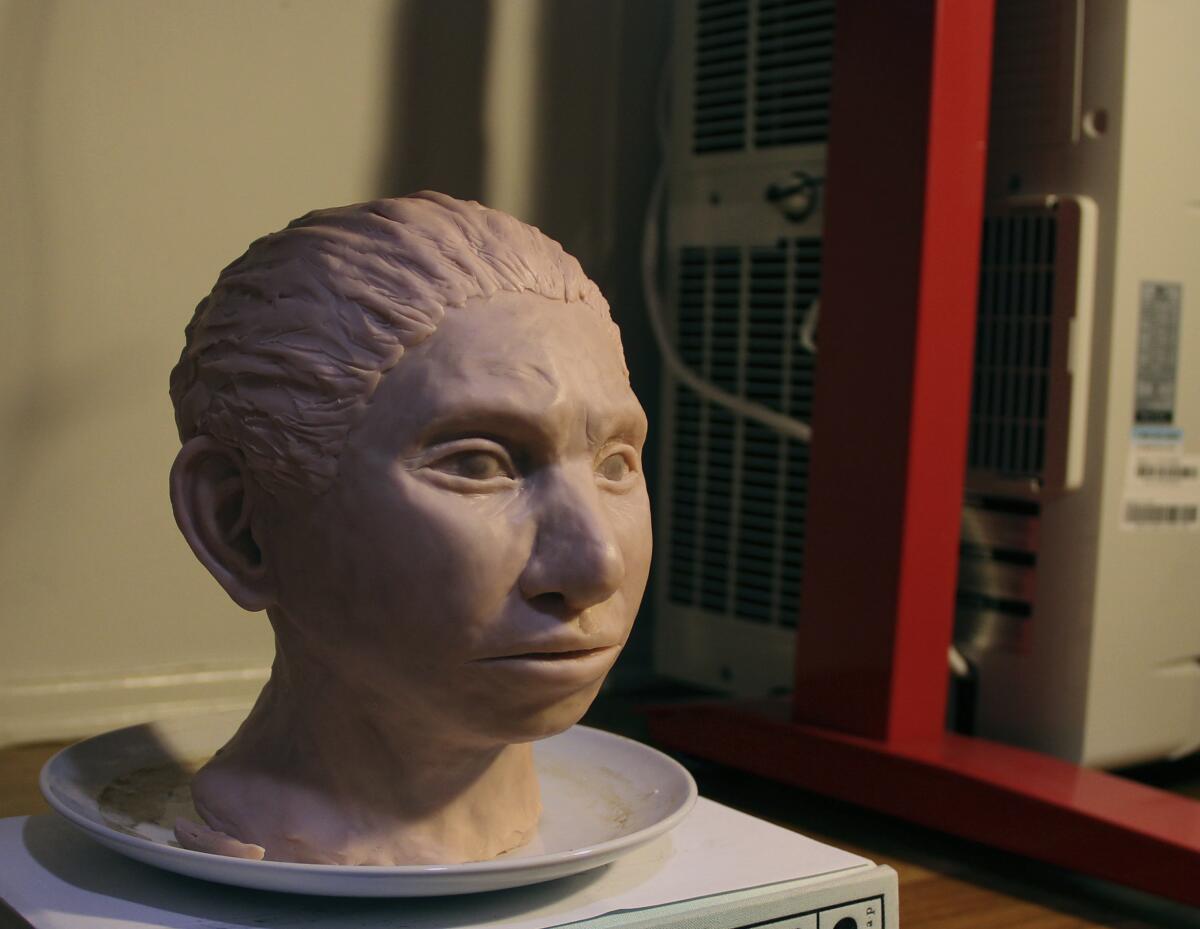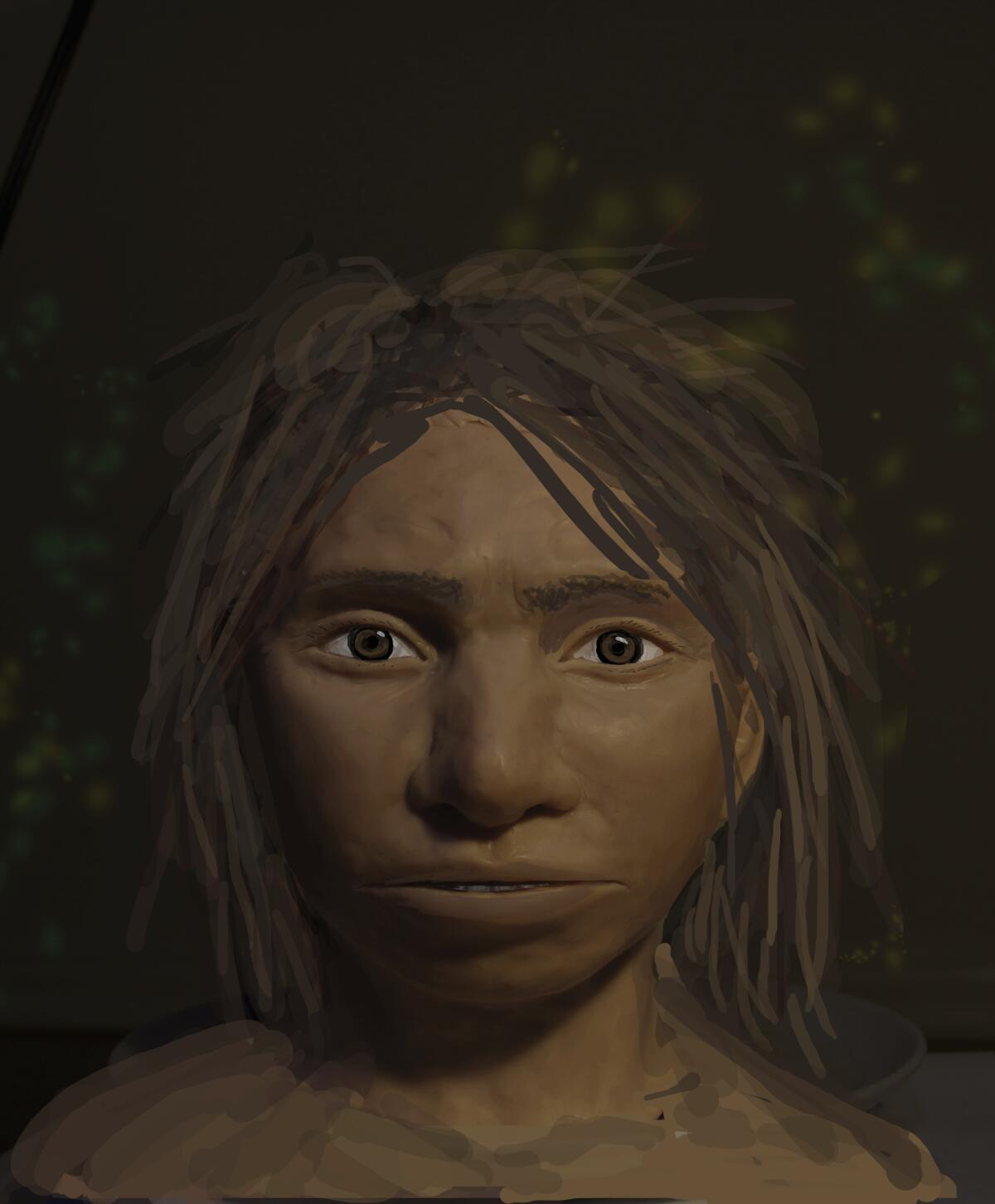DNA lets scientists peer into the faces of our ancient cousins, the Denisovans

- Share via
Scientists say they’ve deciphered features of a Denisovan skull and learned other details about our mysterious, extinct cousins by analyzing ancient DNA.
The genetic material came from the finger bone of a female member of the Denisovans, a population known mostly from small bone fragments and teeth recovered in Siberia’s Denisova Cave. Denisovans may have occupied that cave from more than 200,000 years ago to around 50,000 years ago.
Scientists say Denisovans and Neanderthals descended from a common ancestor that had split from the lineage leading to modern humans. Even so, our species interbred with both and picked up genetic markers that are still detectable in some people today.
Recently, a Denisovan jaw fragment at least 16,000 years old was reported from Tibet, but it gave scientists very little sign of what Denisovans looked like.
The new work used DNA data from the finger bone as well as from two Neanderthals, five ancient and 55 present-day Homo sapiens, and five chimps. Researchers looked for differences in activity levels for specific genes that could affect anatomical traits, which in turn hinted at differences in appearance for those traits.
The team identified 32 traits that gave them clues to the Denisovan skeleton, according to a report Thursday in the journal Cell.
Liran Carmel of the Hebrew University of Jerusalem and his colleagues looked for differences in activity levels for specific genes that could affect anatomical traits, which in turn hinted at differences in appearance for those traits.
As expected, most were shared with Neanderthals, including robust jaws, a low forehead, a large rib cage and a wide pelvis.
The analysis also indicated Denisovans had a wider face than Neanderthals or modern humans, and that they had a more protruding face than our own species but less so than Neanderthals, for example. The calculations could not tell how big such differences were.
Such DNA analysis can teach scientists about how our forerunners evolved and how their development differed, Carmel said.
The method showed good accuracy in predicting known physical traits of Neanderthals and chimps, the researchers said. Carmel said the Denisovan jaw fossil matched the method’s predictions “almost perfectly.”

Experts who weren’t involved in the study said they were impressed with the work.
While it’s impossible to know how accurately the study estimated Denisovan traits, its approach is “brilliant and original,” said Benedikt Hallgrimsson of the University of Calgary.
Once the appropriate fossils are found, the study’s specific predictions can be tested, said Hallgrimsson, who studies evolutionary aspects of how genes influence physical traits in mammals.
Bence Viola of the University of Toronto, who studies Denisovan fossils, called the work “a huge step forward. ... This would have been called science fiction five years ago.”
The overall picture it gives of the anatomy is “invaluable,” although some details are probably incorrect, he said.
Viola said he was skeptical about an artist’s renderings that added skin, eyes and hair to the skull produced by the study. Scientists don’t know enough about Denisovans to ensure such renderings are accurate, he said.
Carmel, who commissioned the renderings, said they were as anatomically precise as possible but necessarily “also represent some artistic interpretations.”






